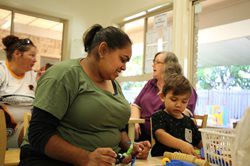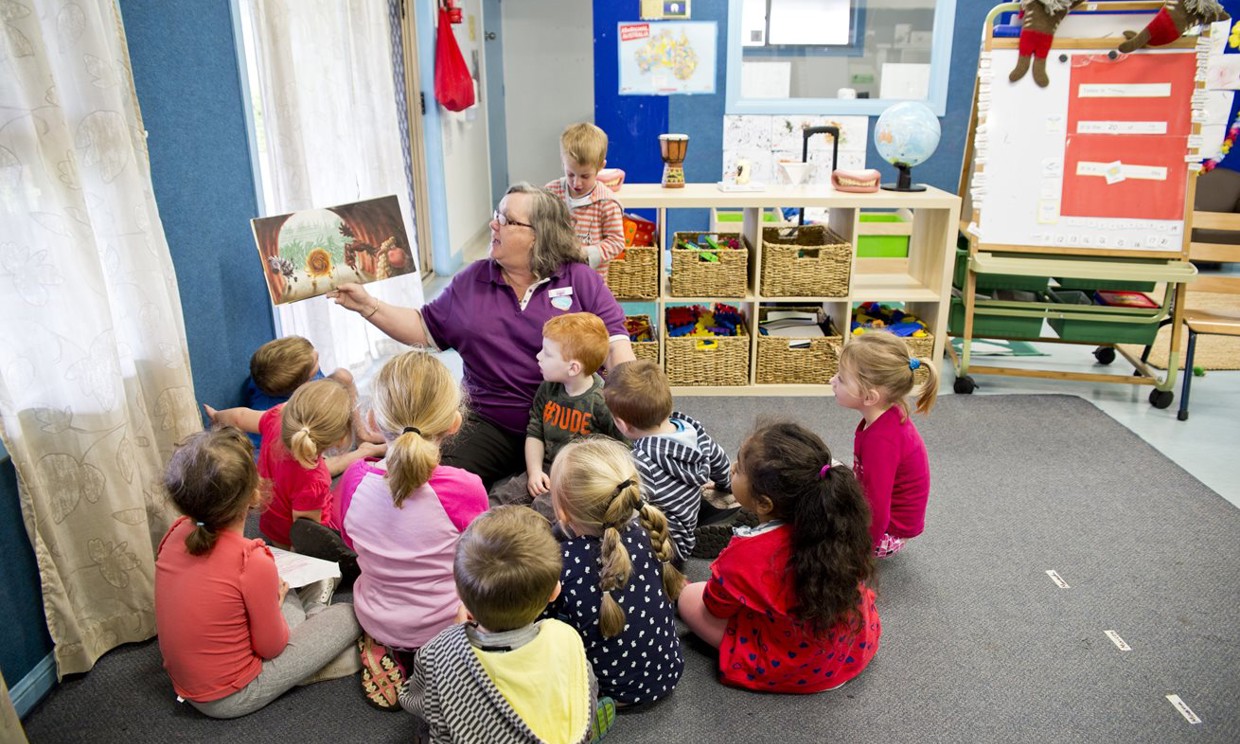Building an awareness of Aboriginal culture within Goodstart Early Learning Bray Park – Elmwood Drive and the wider community is the aim of a new program at the centre.
With NAIDOC week celebrations taking place throughout the country from July 2-9, 2017, the educators at Bray Park are keen to teach the children about the importance of First Australian culture.
NAIDOC Week is a time to celebrate the history, culture and achievements of Aboriginal and Torres Strait Islander peoples. The theme for the 2017 event is Our Languages Matter which aims to emphasise and celebrate the role that Indigenous languages play in cultural identity.
Bray Park educator Robynne Medhurst said the centre had organised an excursion to the Dandiiri Schools and Community Library at Inala on May 31. The 10 kindergarten children will enjoy a storytelling session with an Aboriginal elder.
The centre is also setting up an Aboriginal and Torres Strait Islander playgroup once a fortnight in an effort to invite more indigenous families into the centre, and create a commonplace for them to meet.
“This is a really nice way of introducing families to the centre and showing them what their children can learn here,” Ms Medhurst said.
“It will be a playgroup for mum, dads, carers and their children aged under five years old. The carers can have a chat and get to know each other while the children can have some fun.”

Ms Medhurst said having an understanding of and respect for Indigenous, and other, cultures helped children learn about tolerance, compassion and understanding.
“It also helps children understand the story of their country and enables them to develop a sense of being and belonging,” Ms Medhurst said.
NAIDOC stands for National Aborigines and Islanders Day Observance Committee. Its origins can be traced to the emergence of Aboriginal groups in the 1920s which sought to increase awareness in the wider community of the status and treatment of Indigenous Australians.
About 250 distinct Indigenous language groups were believed to be in use at first European contact in the late eighteenth century. Most of these would have had several dialects, meaning the total number of named varieties would be in the many hundreds. Today, about 120 of those language are still spoken.
With NAIDOC week celebrations taking place throughout the country from July 2-9, 2017, the educators at Bray Park are keen to teach the children about the importance of First Australian culture.
NAIDOC Week is a time to celebrate the history, culture and achievements of Aboriginal and Torres Strait Islander peoples. The theme for the 2017 event is Our Languages Matter which aims to emphasise and celebrate the role that Indigenous languages play in cultural identity.
Bray Park educator Robynne Medhurst said the centre had organised an excursion to the Dandiiri Schools and Community Library at Inala on May 31. The 10 kindergarten children will enjoy a storytelling session with an Aboriginal elder.
The centre is also setting up an Aboriginal and Torres Strait Islander playgroup once a fortnight in an effort to invite more indigenous families into the centre, and create a commonplace for them to meet.
“This is a really nice way of introducing families to the centre and showing them what their children can learn here,” Ms Medhurst said.
“It will be a playgroup for mum, dads, carers and their children aged under five years old. The carers can have a chat and get to know each other while the children can have some fun.”

Ms Medhurst said having an understanding of and respect for Indigenous, and other, cultures helped children learn about tolerance, compassion and understanding.
“It also helps children understand the story of their country and enables them to develop a sense of being and belonging,” Ms Medhurst said.
NAIDOC stands for National Aborigines and Islanders Day Observance Committee. Its origins can be traced to the emergence of Aboriginal groups in the 1920s which sought to increase awareness in the wider community of the status and treatment of Indigenous Australians.
About 250 distinct Indigenous language groups were believed to be in use at first European contact in the late eighteenth century. Most of these would have had several dialects, meaning the total number of named varieties would be in the many hundreds. Today, about 120 of those language are still spoken.


